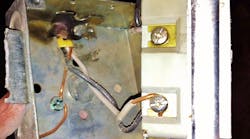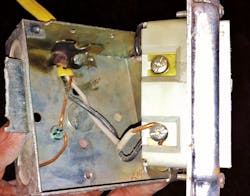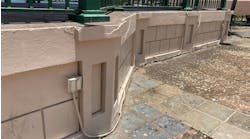How well do you know the Code? Think you can spot violations the original installer either ignored or couldn't identify? Here's your chance to moonlight as an electrical inspector and second-guess someone else's work from the safety of your living room or office. It's your turn to identify the violation.
Hint: Classify this as a misfit.
Find the Answer
As indicated by the scorch mark on the clamp and the box, this cable shorted/grounded out and tripped the circuit breaker. The reason this happened was because the clamp is actually a clamp for MC or AC type cables, but the installer modified it by cutting part of it off in order to make it “look” like an NM cable clamp. Unfortunately, this person did not notice some of the subtle differences between the two types of clamps. The MC clamp that was used has a sharp edge on it, which cut into the jacket of the NM cable and caused the circuit to short out. Clamps for NM cables have surfaces that are more rounded than sharp.
Using this clamp was a violation of Sec. 110.3(B), since the fitting is not listed or labeled for use with NM cables. It is also a violation of Sec. 300.15, which similarly requires fittings or connectors to be used only with the wiring methods for which they are specifically designed and listed. Lastly, Sec. 314.17 requires conductors entering boxes to be protected from abrasion. As indicated by the flash marks on the clamp, that was not the case for this installation.





